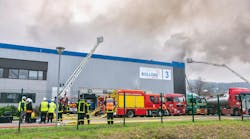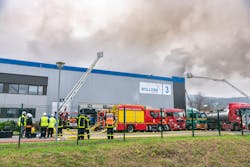Barry on Batteries: Chemical Industry Safety Insights for Lithium-Ion Battery Processing
Despite recent high-profile reports of lithium-ion battery (LIB) fires in warehouses, e-mobility devices and electric vehicles (EVs), National Fire Protection Association (NFPA) data shows that vehicle fire incidents remain rare, happening only once per 19 million miles traveled.
Safety entails many factors, but using reputable suppliers and standards is really the beginning. In my Manhattan condominium complex, the condo board requires residents to register their e-mobility devices. The board’s policy clearly states that any LIB that does not have either an Underwriters Laboratories (UL) or the Electrical Testing Laboratories (ETL) mark, which indicates that the battery and/or device has been safety tested and will perform as expected, must be immediately removed. This is a starting point for the consumer.
In the chemical industry there are both administrative controls and engineering controls. Initially, there are hazard and operability studies (HAZOPs) to check designs for safety risks. The HAZOPs include many disciplines from the plant such as operators, process engineers and equipment vendors to ensure that every safety aspect is fully explored.
During the initial engineering phase, it’s important to conduct process hazard analysis (PHA) reviews to incorporate safety features into the design. These studies and reviews lead to the development of two types of controls:
- Administrative controls: These include policies, procedures and training programs.
- Engineering controls: These involve automation systems, emergency shutdown mechanisms and equipment isolation protocols.
For chemical plant operators, LIB safety should be familiar. Safety practices involve certain aspects that are common in the chemical industry. On a high level, safety entails physical space (minimized storage density) and equipment (fire suppression, blowout protections, early detection monitoring, instrumentation and automated controls), training and the use of personal protective equipment.
A safety program also should include easy and clear emergency rescue/response guides and consistent standard operating procedures (SOPs). The SOPs must also include proper handling at the required scale of operation, physical inspections, correct tools to use, proper water usage for the fire, etc. In addition, consistent training across all electrified applications is necessary. Safety drills are also essential in addition to “safety warning” testing.
The training also has a communication aspect both internally at the facility as well as to the community surrounding the plant. Communication is not only verbal but in written signs and labels that identify all known hazards as well as accurate, timely and comprehensive information if an incident occurs. Safety data sheets which are mandatory for the chemical industry are continually being developed for LIBs manufacturing.
As the chemical industry knows, safety starts with leadership.
Leadership must prioritize safety, provide resources and initiatives and lead by example. There can be no shortcuts. Employee involvement is also critical as suggestions are best provided by those who can recognize the safety hazards and can offer alternatives and improvements. One of my guiding principles of Perlmutter & Idea Development is that the LIB value chain can act as an electric resource but must think like a chemical plant. By following this mentality, the challenges fires present can be mitigated.




